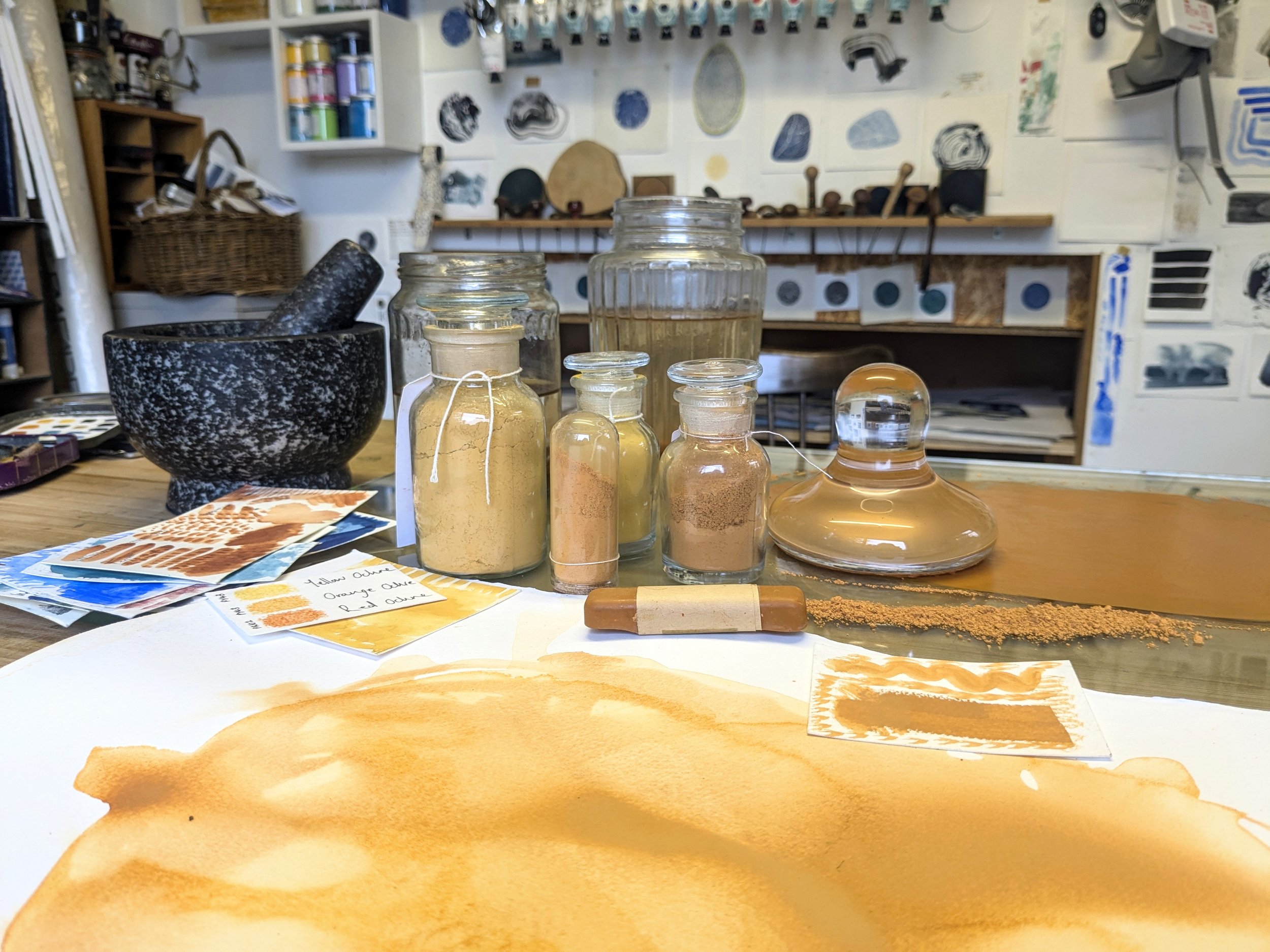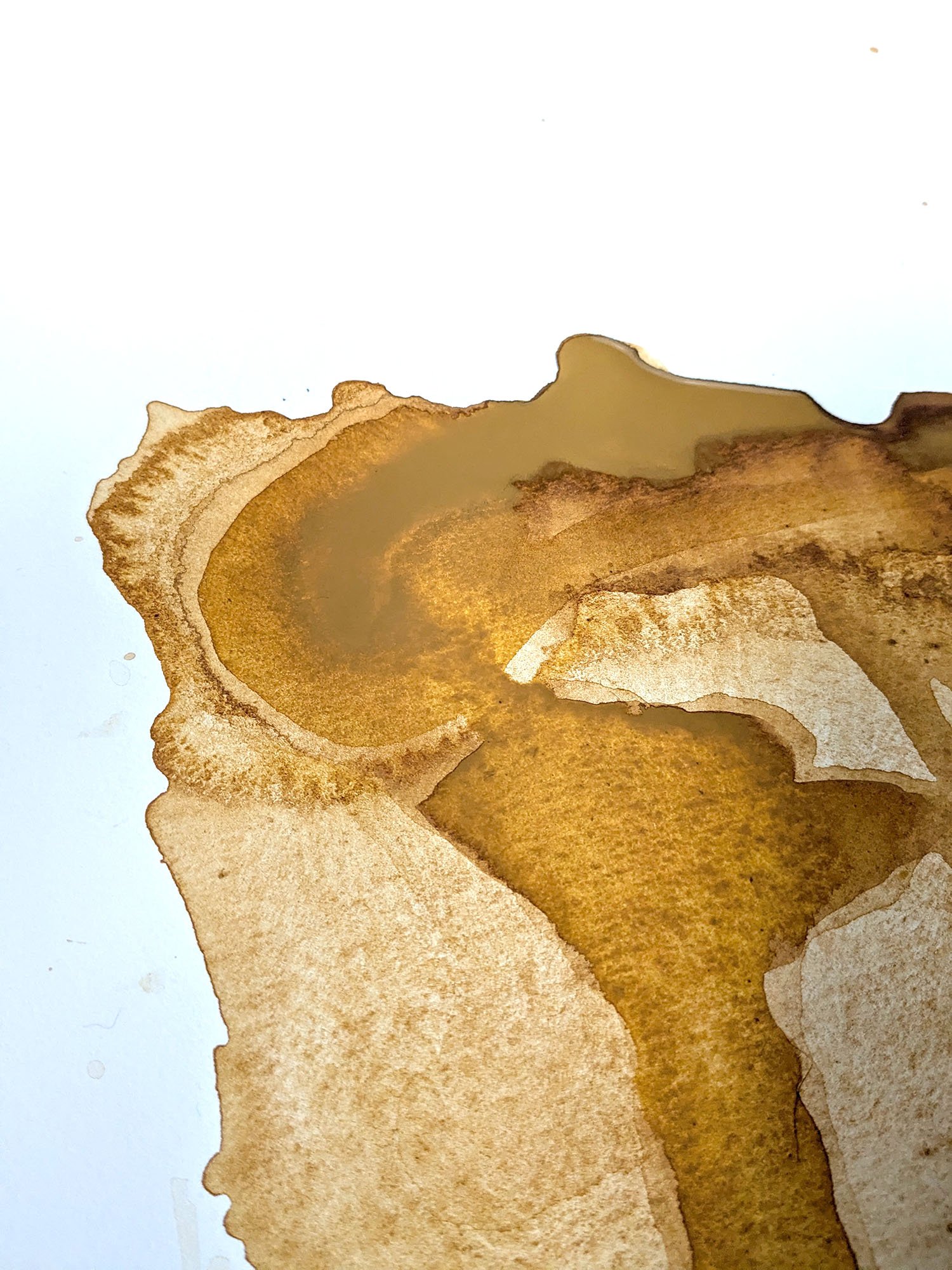In collaboration with The National Coal Mining Museum for England
View of ochre water beds where the ochre settles before being collected. National Coal Mining Museum for England.
Sustainable Shades: The Art of Ochre
An Exploration of Ochre Pigment and Coal Mining Water Filtration
As part of my Fine Art MA at Falmouth University, I have embarked on a project that explores the process of creating ochre pigment from the by-products of coal mining water filtration. Through the use of ochre, I investigate the intersections of industry, nature, and environment, while highlighting the narratives tied to coal mining and uncovering the forgotten stories embedded in the land. I would like to thank The National Coal Mining Museum and Mining Remediation Authority for granting me access to the ochre on site at NCM.

Water is pumped from mines within a 6 mile radius

Water treatment plant at the National Coal Mining Museum for England.

This tank is where the process of preparing the ochre begins. Water is pumped in, and as the iron oxidises, it turns a striking shade of orange.

Ochre collecting and settling in one of the ochre beds.

Dried ochre pigment after harvest.

Grounding ochre pigment.

Processing ochre samples in my studio.

Layers of ochre watercolour on paper.

Visitors walking through the grounds of the National Coal Mining Museum as part of a guided tour I organised. The walk shared the process behind my project and showed how the landscape and environment have shaped the materials and ideas I’m working with.

During the tour, we visited the reed beds—an essential part of the filtration system that helps remove ochre from the water before it flows back into the wider water system.

Close up of the reed beds.

Close-up of the reed beds where you can see the ochre beginning to collect—this is one of the final stages in the natural filtration process before the cleaned water returns to the environment.

After the tour, we gathered at the Pony House where I gave a talk about my project, sharing the materials, processes, and ideas behind the work.

During the talk, I shared a piece of raw ochre with the group and discussed its natural properties, how it's processed, and how I use it as a pigment in my work.

Samples of natural pigments I created during the project, alongside my recipe sketchbook—where I recorded trial and error, notes, and colour swatches to use in future work and to share with others.

Grinding raw ochre pigment by hand using a pestle and mortar—an important step in refining the material before mixing it into paint or ink.

Ochre samples

Mixing paint using a traditional glass muller and slab—this method helps evenly disperse the pigment into the binder, creating a smooth, high-quality paint.

A demonstration of how I combined water with pigment to create stratifications of watercolor on large sheets of paper. This technique was part of a broader demonstration showcasing my projects and artistic process.

Adding more pigment and watercolour paint to the demonstration piece.

I am currently experimenting with the different shades that can be achieved by heating the ochre, creating the colour shifts seen in the picture—an ongoing exploration in my practice.

Here, I’m demonstrating how water plays a crucial role in creating the first layer of my paintings, exploring the interaction between water and pigment.

The Pump House, where I hosted a pop-up exhibition showcasing a series of ochre studies on paper.

Ochre studies (70 cm x 50 cm) hung on a pipe inside the Compressor House, fixed with magnets to make use of the original historic fittings and features.

Side view of the Compressor House, showing the space where the ochre studies were displayed, highlighting the industrial features and the unique setting of the exhibition.

The Pump House is a beautiful building, providing the perfect backdrop for a small installation of hanging colour swatches, created during my experiments with ochre.

The suspended work was carefully hung with magnets, making use of the historic metal batons already present in the walls.

Remediation II Watercolour and ink on paper, including ochre and indigo pigments made during the project. 70 cm x 50 cm

Detail of Remediation II
